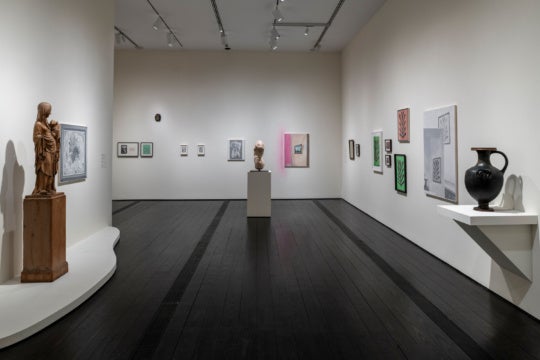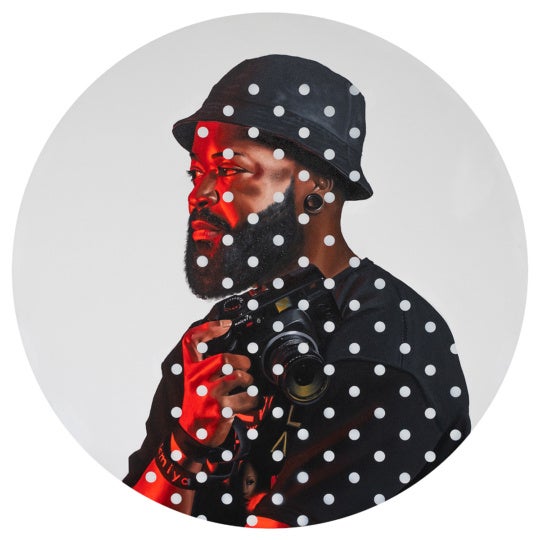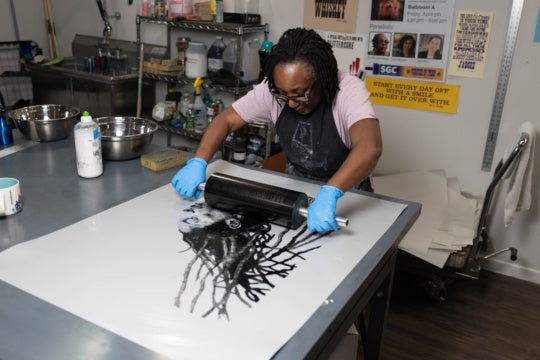Folkert de Jong is a kind of modern-day Dutch master: His sculptures convert base materials into physically and philosophically complex work that is true to that legacy in both letter and spirit. Steeped in the rich history, politics, commerce, and art of the Netherlands, his work exhibits the acuity and practical ingenuity that have long made the nation greater than the sum of its geographic parts. His work thrives on the tension between the triviality of modern culture and the historic brutalities that have made it possible. de Jong recently visited the University of Georgia as part of the Lamar Dodd School of Art’s visiting artist lecture series, and he was kind enough to sit down with BURNAWAY to talk about his work, his signature material (Styrofoam), and his thoughts on spirituality in the arts.
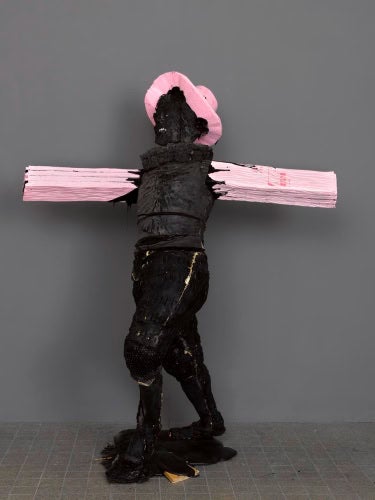
Just arrived from NYC
Charles Westfall: You have a solo exhibition that just opened at James Cohan Gallery in Chelsea, is that right? How’s the show being received?
Folkert de Jong: Yes, it opened on April 1. There were many people at the opening, and I’ve done some interviews with art magazines — so far it’s been good. And it’s always nice to get a direct response, to be there in the same room with my work and the audience.
CW: Were there any responses at the gallery that surprised you?
FJ: Some people asked if it was necessary to have the background information to understand the work. Usually, people have a lot of ideas and interpretations about the work, even if they know nothing about it. My work is very figurative, and so there is often a sort of immediate moment of recognition, when it reminds people of something. And then there is a snowball effect of associations. I think that’s an interesting way of beginning to look at an artwork: You get involved with it, then you have a moment of recognition, and then you start to go deeper. With my work, there is often a moment when people are a bit shocked about what they see. The subjects are a bit dark.
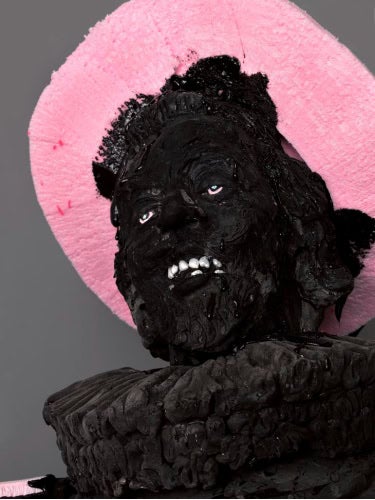
Fear and trembling (with glimmers of hope)
CW: Speaking of the subject matter, you’ve said that many of the characters and narratives in your work make reference to real people and historical events, but you never quote those sources directly. By keeping the narratives loose and the references open, are you hoping to keep the meaning of the artwork open as well?
FJ: Yes, because otherwise it could become sort of flat, or maybe a bit educative or moralistic. You might think, “Oh, it’s a representation of this character,” and that’s it.
I use references to history and art history, but I also disconnect these events from their origins and misplace them into another context. There is a moment of confusion, and then you have to ask, “What is this character doing in this context?” And maybe you start to reconsider this character, or this historical event. You wonder if it’s something that you have taken for granted. And maybe you consider whether the nature of these events might be different from what you learned in school. [Smiles]
CW: Terry Eagleton, in paraphrasing Adorno, said that the artist’s work is to — and I’ll read you the quote:
“[expose] the fault-lines of the present without proposing an alternative to it.” 1
He suggests further that the presentation of “negative utopias,” as opposed to utopias, is the only real way to get things moving forward. For me, this idea of a negative utopia resonates very strongly with the subject matter of your work. Would you agree with Eagleton and Adorno’s assertion?
FJ: Yes … [winces] …. But at the same time, I think it’s important try to give an element of hope or something. Because I think it’s very interesting to talk about the dark side of human existence — but then a lot of people are already familiar with that, you know?
CW: What is that element of hope in your own work?
FJ: I think there is, well … [thinks a moment] …. I often think of making something grotesque so that it becomes humorous, so that it becomes lighter, so that it becomes easier to face. We have to face these sides of our human nature and accept them as a part of our life, rather than put them in a corner and say they don’t exist. But I think in order to make it discussable you have to make it a bit lighter. And I think the materials that I use — because they are, in a way, very superficial, or very playful — help people feel comfortable to talk about these serious things. They show that these things can be talked about.
I recently read an article on Philip Guston — about his work, and about the element of irony in his work — and how this irony is what enables us to accept heavier subjects. I think it’s all about creating some sort of balance.
CW: So you’re saying that the materials in your work, by being playful or ironic, are working to kind of disarm, or mitigate the potential shock of the subject matter, right? But, in addition to that sense of irony, the Styrofoam also gives the work a very contemporary feel. Is that sense of the contemporary nature of the material also important? If so, how would you describe its relationship to the historical quality of the subject matter?
FJ: I work with these characters who wear these kind of historical costumes, and what I’m interested in is their motives. And, by transforming them into these high-tech or contemporary materials, I am showing that people are still the same today as they have always been — that [these characters] always exist, you know? What is motivating these characters in this new context is what has always motivated them; only the outfits or materials have changed.
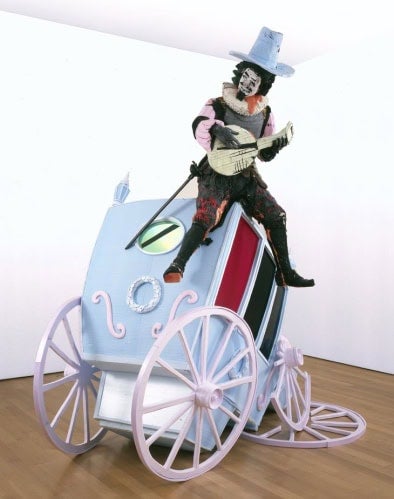
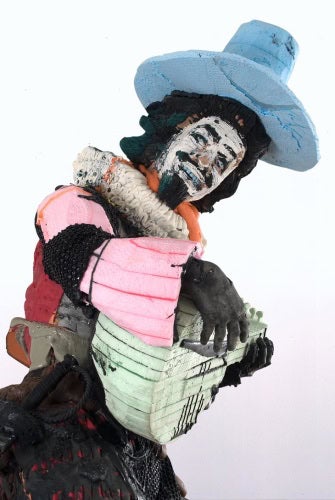
Material and meaning
CW: Speaking of motivations …. Let’s talk about your motivations.
FJ: Sure! [Smiles]
CW: As much as any artist I know, your practice is identified by the use of a particular material. We’ve already talked a little about the ideas behind the Styrofoam, but there is a small quote that I wanted to ask you about. You once said, “[As I] started using the material, I slowly started to discover [its] political side.”
Now that you’re in the mature phase of your work, there is a very clear relationship between form and content. But in developing this style of working, did the content drive the form or — as the quote seems to suggest — did the form, the unique nature of the material, lead to the content?
FJ: It’s interesting what you are asking: if the material follows the concept or the other way around. I don’t really consider myself strictly as a sculptor. For example, if you’re a sculptor and you think, “Ok, I am going to make a sculpture,” and you are always thinking about material — you think in terms of material. For me, all of the research is in my head: It’s more about ideas than three-dimensionality.
And so this means that sometimes accidents can happen, because you are not so focused on the material. So then you are open to something unexpected, and these unexpected paths can lead you to a solution. When I first encountered Styrofoam, it was just this very weird material with a strange color, and it had a sort of attraction to me. And maybe intuitively or subconsciously, I knew that this material that is so unnatural and so light would be a kind of interesting combination with my ideas which can be so intense and dark.
[Editor’s note: Styrofoam is a trademarked name. The generic name for the material used for disposable coffee cups is polystyrene.]
But normally you would start with an idea, and then you find your media. For me, it is not that black and white. I think it’s somewhere in between. It’s good to be open, because the right material could be somewhere you wouldn’t think to look for it: in the hardware store or in your mother’s garden. Your attraction to a certain media could be motivated unconsciously by the necessity of finding something that can materialize your ideas.
But I should say that there is something more important than ideas or materials: how an artwork relates to reality. Art is so often exhibited in an institutional context or in a gallery, but what is the relationship between an artwork and the real world? We’re not living in an art institute; we’re living in a real world. And I think art’s relationship to reality has become unclear.
CW: Could we say that your work operates in a similar way, by taking Styrofoam insulation, a material that performs a very specific, real-world function, and superimposing an artistic meaning?
FJ: Yes, but I think you would be surprised by how many people don’t realize what the material is. When I make my work, I try to build it up between the materials and the ideas to make it so exceptional, or surprising or shocking, that you forget about “art” for a minute. You’re being dragged onto a strange roller-coaster ride of memories and associations … and then confusion. [Smiles]
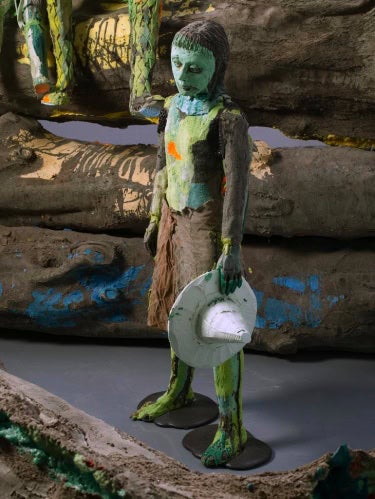
Beauty vs. kitsch
CW: Part of that exceptional quality in your work, if I may say so, is its tremendous visual appeal. I mean, it looks great. With that in mind, I had another quote of yours that I wanted to get your thoughts on: “It is the curious eye that makes the brain want to know more ….”
FJ: Yes. Early in my career, I was very interested in live performance, video, and movies. I was experimenting with television and how it has the power to be so attractive — how it can draw you in and consume you. And I think these materials I am using now have a very strong visual attraction in the fact that they are very colorful or strange. This triggers some kind of curiosity: They have to laugh, or they want to touch it, or just think about the work.
It is a technique that companies also use to promote a product: They do a study on how to trigger the psychological mechanism that makes people want to buy. It’s not that I want to make art like that, but it’s a kind of model. And it helps you understand how deceiving or misleading the appearance can be. What you see is maybe not the true motive behind the material. It can look very candy-like and attractive, but at the same time you’re looking at something highly toxic.
CW: There is a tendency among some artists and critics to be suspicious of beauty — where the experience of attraction is thought to interfere with, or distract from, art’s real or pure function ….
FJ: Yeah, because maybe they think it’s too easy or kitschy or something. Or they think that entertainment is not supposed to be a part of going to an art show. “Entertainment” has become a negative word. I think that beauty or attraction are not necessarily a bad start — or are maybe even a very good start — but it all depends on how layered it is. If you look at art history, like Pop art, for example, you see that many artists have researched this idea of immediate appeal, or instant attraction.
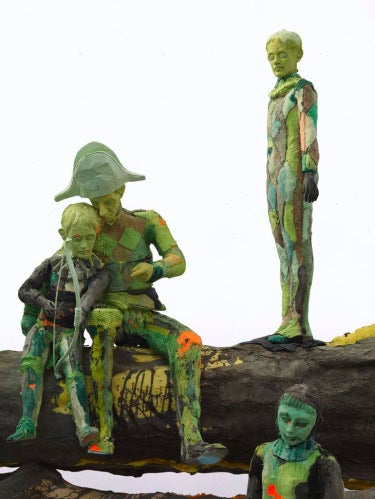
Childhood and studying medicine
CW: I think there is a parallel there to how we represent history. In the past, you’ve described being a little boy, playing with your brother in the old Nazi war bunkers that still exist along the Dutch coast, pretending to be soldiers, and dreaming about war. For kids, war is total candy — it’s the coolest thing ever — because of how it’s been represented to them in John Wayne movies, or on war monuments. But then at some point you get older, and that façade falls away.
FJ: Yes, and I think as adults we still have this ability to be attracted to something in a naïve or innocent way. Something strange or provocative triggers our curiosity. Children are often really excited about my work, because it has the elements that children get excited about. And most children don’t have the same moral issues as grownups, so they’re just completely happy to see this colorful material. And I think it is still in us as adults, even though we know better — the ability to have a moment of attraction that you cannot control. And that’s the moment when some information is being implanted in your system. [Laughs]
CW: Let’s go back to your youth for a minute, because there is a question I want to ask you about your sudden change in career paths. When you were young, you studied medicine. You even worked as a nurse for a while, but you didn’t find it to be as fulfilling as you had hoped. So then you decided to become an artist.
Do you feel that there is a relationship between these seemingly divergent career choices? Do you think that they can be traced back to a common instinct or motivation?
FJ: Yeah, you’re right. At first, you would think it’s so much of a change, from hospital to art school, you know? But, at the same time, there must be a kind of shared fascination. I’ve met many artists who are also studying sociology or psychology, and psychologists who are interested in art.
For me, it’s obvious that my real interest is in the human condition — because you don’t visit a hospital without a reason, right? You go there because you have a problem. And I think it’s interesting that, in a way, we are so adapted to the idea that you only go there under a negative condition: We only discover how fragile we are when we become ill. When we go to an art gallery, we also can discover how fragile we are. I think there are a lot of similarities.
CW: But, in pointing out our fragility, isn’t there also the hope that medicine and art can be restorative?
FJ: Yes! And also I think about a kind of spirituality that comes from accepting your destiny, which is a way of not being afraid of what we are heading toward. That can give you more confidence. There are bigger power structures that make us afraid. Because, when you are afraid, it is a way of controlling people. There is this whole psychological power game that we are a part of — but I think we can escape if we rise above it. Art has the ability to do that, to make us lighter, you know?
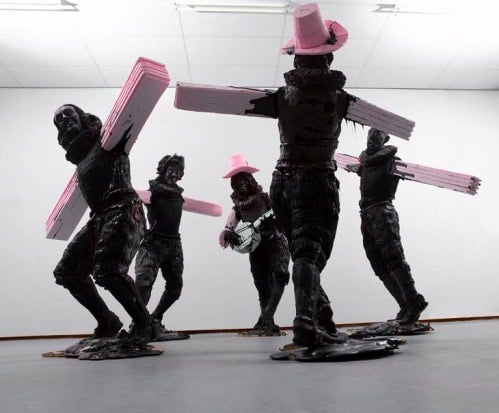
Religion, spirituality, and commerce
CW: So, for you, is that the role of art: to sharpen the way we see things?
FJ: Yes, and I think that is what gives it that element of hope that you asked about. There is a function for art more than just to entertain or be moralistic. But that’s not really a new idea. In the past, art had a much more central function in society. It was more related to religion, like art in churches for example. But now it seems that art has lost its power, because other media took over the task of visualizing God, or because mass media took over the function of religion.
So people are not as concerned about the role of art anymore. They are more concerned about the role of TV. [Laughs] So art only plays a small part in our lives. And now artists are wondering how to properly use mass media in an art context. Things are confusing, because there is the reality of the media — what we see on TV — but then suddenly it also becomes art.
In the context of art these days, if you talk about religion, it’s kind of strange. When other technology gave us the ability to broaden our world, to make our world bigger, we understood that maybe God did not make everything. And then we think maybe we can control things better, we can make things better, or change the processes. We have lost this sense of spirituality, and the hope that somebody will save us! [Laughs]
I have read the Bible — my family is very involved with the church — and it just doesn’t speak to me, so I cannot relate to that. But I understand that it gives people hope; it gives them a tool, or something to hold on to that will guide them. I think it’s still necessary to believe that you can improve yourself and your surroundings and live alongside other people.
CW: And so, for you, art is a way to get back in touch with that spirituality, and maybe extend it to others?
FJ: I think so, yeah. Without having to become a preacher or something. [Laughs] When I am sculpting this foam, at some point it’s going to become something of real value both for me and others. It can be the same with music: There is a kind of ritual that we are attracted to. There are different ways that we replace this religious presence. Even if you are not religious, it’s still very good to be conscious of the spiritual, and of belief.
CW: Would it be fair, then, to compare the artistic expression of belief, with the religious expression of faith? … That’s kind of a big question!
FJ: I think that could be very true. And I think maybe I am very religious in that way, maybe not in a Christian way. But I believe in the spiritual — more and more, I find this word in my mouth.
In a really good artwork there is a moment when something starts to rise above the work, you know? There is the sense of visualizing something that you cannot grab. And that is something magical or spiritual. It allows you to go above the materialization and into a world of spirit, or thought, or whatever you call it. And I think you learn from that: to relieve the misery, or to accept the malfunction of people and the world. And then you can understand that it’s all part of the balance of the whole thing: both the origin and the destruction.
And so the artist is the musician, and, as long as his music is playing, the room keeps moving. The dance keeps going.
1 Terry Eagleton, “Making a Break,” book review of Archaeologies of the Future: The Desire Called Utopia and Other Science Fictions by Fredric Jameson. London Review of Books, Vol. 28 No. 5, March 9, 2006. Pages 25-26.

